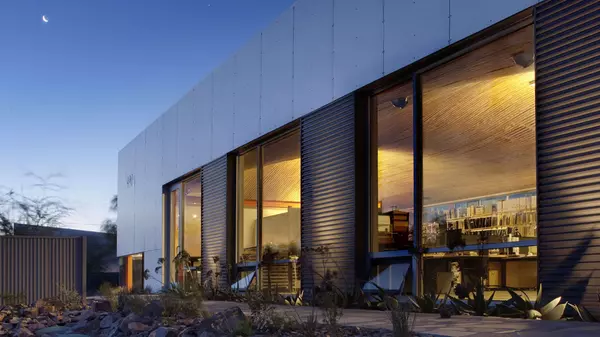Construction of Otay Mesa East facility expected this fall amid newly reached agreements
Two key agreements needed to begin construction of the long-awaited Otay Mesa East Port of Entry facility on the U.S. side have been finalized, with project managers expecting to break ground sometime this fall.
The newly penned agreements with the U.S. federal government and Mexico make way for the future port of entry, which will be a few miles east of the existing Otay Mesa border crossing. The overall $1.3 billion project aims to reduce border wait times between San Diego and Tijuana.
“We continue to work closely with all of the entities so that we can get this to the finish line,” said Nikki Tiongco, South County Trade Corridors director with Caltrans, which is the project sponsor along with the San Diego Association of Governments, or SANDAG. “This is a project that is very critical to our region, and we’re just very excited to finally break ground in the vertical portion of this facility.”
Last week, U.S. Customs and Border Protection and the General Services Administration announced the formalization of a Donation Acceptance Agreement with SANDAG and Caltrans.
The agreement states that SANDAG and Caltrans are responsible for the construction of the port of entry, which will then be donated to the federal government, explained María Rodríguez Molina, project manager with SANDAG. She added that both agencies will also contribute to the operation and maintenance costs for the next 40 years.
“This project represents a long-anticipated investment in our border community that will strengthen security, improve efficiency, and support the economic livelihood of the San Diego region,” Sidney Aki, CBP’s director of field operations in San Diego, said in a statement.
At a board meeting in January, SANDAG officials outlined the financial plan for the next stage of the project, which is funded in part by $150 million from the Infrastructure for Rebuilding America, or INFRA, grant, $192 million from California’s Trade Corridor Enhancement Program, and $15 million in local funds. SANDAG will fund the remaining $271 million through bonds.
In addition, officials on both sides of the border confirmed that Mexico’s Department of Infrastructure, Communications, and Transportation accepted the terms established in a previously announced agreement by SANDAG. An addendum to the deal, which included changes related to toll collection on the Mexican side, was signed by Mexico on Friday.
Mexico has already invested $356 million in construction and other infrastructure south of the border as part of the project, said Alicia Kerber, Mexico’s consul general in San Diego. Construction is nearing completion on the Tijuana side.

“San Diego and Tijuana are a complete and tangible example of binational integration in terms of economic, social and cultural exchanges,” said Kerber.
The project on the U.S. side, which has been more than 20 years in the making, has included the construction and completion of state Route 11.
Rodríguez Molina said there is still no date for breaking ground on the port of entry facility since the agency is still working on the construction contract. Once it’s ready, it will be presented to the board for authorization to begin construction.
But it will still be some time before border commuters can use the new border crossing.
It is already far behind schedule. The project’s opening date had previously been projected for late 2024.
But if all goes as planned at this point, the first phase of the project could be operational by the end of 2027. This phase includes opening the northbound crossing to commercial and passenger vehicles.
Unlike other ports of entry, the Otay Mesa East border crossing will charge a “dynamically priced toll” for waits of 20 to 30 minutes, or less. The toll revenue, to be collected electronically on the Mexican side, will be split evenly between the two countries. The project is expected to generate $3.7 billion for each country over the next 40 years.
Categories
Recent Posts










GET MORE INFORMATION


